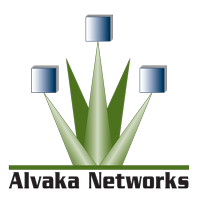Implementing Secure DevOps in Your Software Lifecycle
The Need for Secure DevOps
In an era where cybersecurity threats evolve rapidly and software delivery cycles are accelerating, integrating security into DevOps practices is no longer optional—it’s essential. Secure DevOps, also known as DevSecOps, embeds security into every phase of the software development lifecycle (SDLC), from planning and development to testing, deployment, and maintenance.
By shifting security “left”—embedding it early and continuously—organizations can detect vulnerabilities sooner, automate compliance, and reduce the risk of breaches without slowing innovation.
Building a Secure DevOps Foundation
Successfully implementing Secure DevOps begins with strategic planning. This means aligning your security goals with business objectives, understanding your current infrastructure, and identifying where and how security can be embedded throughout your DevOps workflows.
Key foundational steps include:
-
Mapping out the full software lifecycle and identifying potential security gaps
-
Building cross-functional teams with shared responsibility for security
-
Integrating automated security checks into CI/CD pipelines
A security-first approach from the start ensures that vulnerabilities are addressed proactively, rather than reactively.
Key Strategies for Secure DevOps Integration
1. Cross-Team Collaboration
Effective Secure DevOps hinges on dismantling silos. Developers, operations teams, and security professionals must collaborate closely to build secure software from the ground up. This involves shared goals, open communication, and mutual understanding of priorities.
Adopting a shared responsibility model makes security a collective goal, rather than the sole domain of a separate security team.
2. Tooling and Automation
Automation plays a pivotal role in Secure DevOps. Security tools should integrate directly into existing workflows, enabling automated code analysis, dependency scanning, and configuration validation within CI/CD pipelines.
Key practices include:
-
Static and dynamic code analysis
-
Infrastructure-as-code (IaC) security validation
-
Container scanning and policy enforcement
-
Secrets detection in code repositories
Automation ensures consistency, speeds up detection, and reduces the chance of human error.
3. Continuous Learning and Feedback
Secure DevOps is not a set-and-forget approach. Teams should continuously refine practices based on real-world feedback, threat intelligence, and post-incident analysis.
Establishing feedback loops and regular retrospectives allows teams to:
-
Analyze incidents and near misses
-
Adapt to emerging threats
-
Share lessons learned across functions
Security training, certifications, and internal workshops help keep teams up to date with evolving standards and attack techniques.
Fostering a Security-First Mindset
A culture of Secure DevOps doesn’t just require new tools or workflows—it requires a shift in mindset. Security should be considered at every decision point and by every contributor in the development lifecycle.
Encouraging secure coding practices, peer reviews focused on risk, and threat modeling during planning sessions cultivates a mindset where security is everyone’s responsibility.
By reinforcing the importance of security across roles, organizations build software that is both innovative and resilient.
Best Practices at a Glance
-
🔁 Shift security left: Introduce it early in the SDLC
-
🔒 Automate wherever possible to scale consistently
-
👥 Foster collaboration between Dev, Ops, and Security
-
📈 Use metrics to measure and improve security posture
-
🧠 Train and educate teams continuously
-
📦 Scan third-party components and open-source libraries
-
🔄 Establish feedback loops and post-incident reviews
Did You Know? Organizations that integrate security into their DevOps pipelines reduce time-to-detect and time-to-respond to security incidents by up to 48% compared to traditional models.
Secure DevOps as a Strategic Imperative
Implementing Secure DevOps is a long-term investment in your organization’s agility, security, and trustworthiness. It enables faster delivery of secure software, better compliance with regulations, and more effective responses to emerging threats.
Rather than bolting on security at the end, Secure DevOps weaves it into the very fabric of development—creating a resilient and adaptable security culture.
While the journey to Secure DevOps can be complex, it is essential for modern organizations navigating today’s cyber and operational risks. Whether you’re just starting or refining your practices, embedding security into your development lifecycle is a powerful step toward sustainable innovation.
Alvaka supports organizations striving for stronger cybersecurity maturity by encouraging best practices like Secure DevOps and continuous infrastructure monitoring. For more on how we contribute to secure IT operations, visit www.alvaka.net.
FAQ
What is Secure DevOps, and why is it crucial for IT management? ▼
Secure DevOps, often referred to as DevSecOps, is the integration of security practices within the DevOps process. It is crucial for IT management because it ensures that security is a continuous focus throughout the software development and deployment cycle, reducing vulnerabilities and improving the resilience of applications.
How does Secure DevOps contribute to dealing with cybersecurity threats? ▼
By incorporating security into the DevOps pipeline, Secure DevOps helps organizations respond quickly to cybersecurity threats. Security measures are automated and integrated into daily work, enabling teams to detect and remediate security issues early, thereby minimizing the risk of exploitation.
What are the first steps to implement Secure DevOps in an organization? ▼
The initial steps include evaluating current security and development practices, defining security requirements, and training staff. It’s essential to establish a comprehensive strategy that aligns with business objectives and to foster collaboration between development, operations, and security teams.
What cultural changes are needed for a successful Secure DevOps adoption? ▼
To successfully adopt Secure DevOps, an organizational culture that promotes open communication and collaboration is essential. Teams must break down silos and work together with a shared responsibility for security, ensuring that it is integrated throughout the entire software lifecycle.
Can you recommend tools that support Secure DevOps integration? ▼
Certainly, there are several tools that enhance Secure DevOps practices, including automation tools like Jenkins, security scanning tools like SonarQube, and configuration management tools like Ansible. The choice of tools should align with specific business needs and the existing technology stack.
How does Secure DevOps differ from traditional DevOps? ▼
Secure DevOps extends traditional DevOps by weaving security practices into every stage of the software development process. Consequently, security is not an afterthought but a fundamental component of product development, leading to safer, more reliable releases.
Is Secure DevOps only applicable to large organizations? ▼
No, Secure DevOps is applicable and beneficial to organizations of all sizes. Smaller companies can particularly benefit from the risk mitigation that Secure DevOps offers, as they often have limited resources to deal with security breaches post-deployment.
How does automation play a role in Secure DevOps? ▼
Automation plays a pivotal role in Secure DevOps by streamlining security checks, code scanning, and deployment processes. This allows for consistent security measures, reduces human error, and frees up teams to focus on complex security tasks that require expert attention.
In what ways does Secure DevOps impact software release times? ▼
Contrary to typical concerns, Secure DevOps can actually accelerate software release times. Since security is integrated and automated, organizations can avoid the delays that often occur when security issues are discovered late in the development process or in post-deployment audits.
What type of training do teams need for Secure DevOps? ▼
Teams require both security and DevOps-specific training to effectively implement Secure DevOps. Training should cover secure coding practices, the use of security tools within the CI/CD pipeline, and awareness of common security issues. Interdisciplinary education is crucial for fostering understanding and collaboration between different roles.







